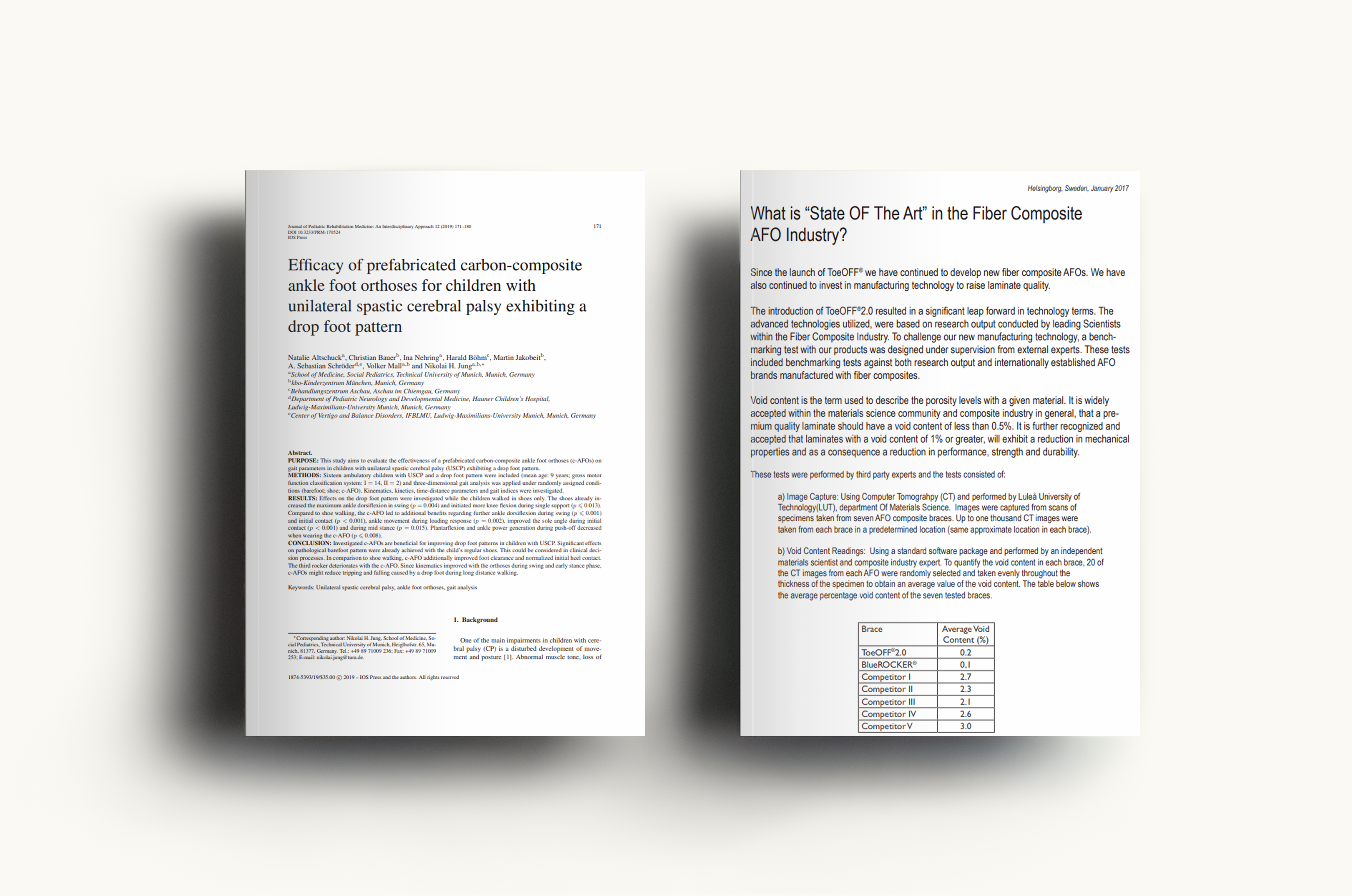Recommended Literature
Welcome to our recommended reading page for orthopedic technology. This curated collection of studies plays a crucial role in our product development, as we constantly strive to ensure our work is informed by the latest research. As part of our commitment to knowledge sharing, we've compiled links to relevant studies for your convenience. Please note that while we do not provide full-text studies, we offer links where you can read the abstracts or, in some cases, access the complete study.

Ankle-Foot-Orthoses
Author: Danielsson A, Stibrant Sunnerhagen K.
Source: J Rehabil Med 2004; 36: 165–168
Author: ANI MNATSAKANIAN BS et al.
Source: Muscle Nerve 000:000–000, 2016
Author: Altschuck N. et al
Author: Roberts Joffe, Fredrik Forsberg, Henrik Lycksam, Anders Sjögren
Source: ICTMS 2017 - 3rd International Conference on Tomography of Materials and Structures, 26-30 June 2017, Lund, Sweden
Author: Shuman BR, Espesito ER
Source: Journal of Biomechanical Engineering. JANUARY 2022, Vol. 144 / 011004-1
Author: Shuman et al.
Source: Journal of NeuroEngineering and Rehabilitation (2023) 20:11
Author: Megan M. Grunst , Robert C. Wiederien1 and Jason M.
Source: A systematic review Prosthetics and Orthotics International 2023
Author: Burke K1,2, Cornell K1,3, Swartz Ellrodt A1,2, Grant N1,2, Paganoni S2,4,5 and Sadjadi R1,2*
Source: CMT study.2021
Author: Robert H. Meier, CO, BOCO; David C. Ruthsatz, CO, CPA; and Daniel, Cipriani, PT, PhD.
Source: Lermagazine 2014
